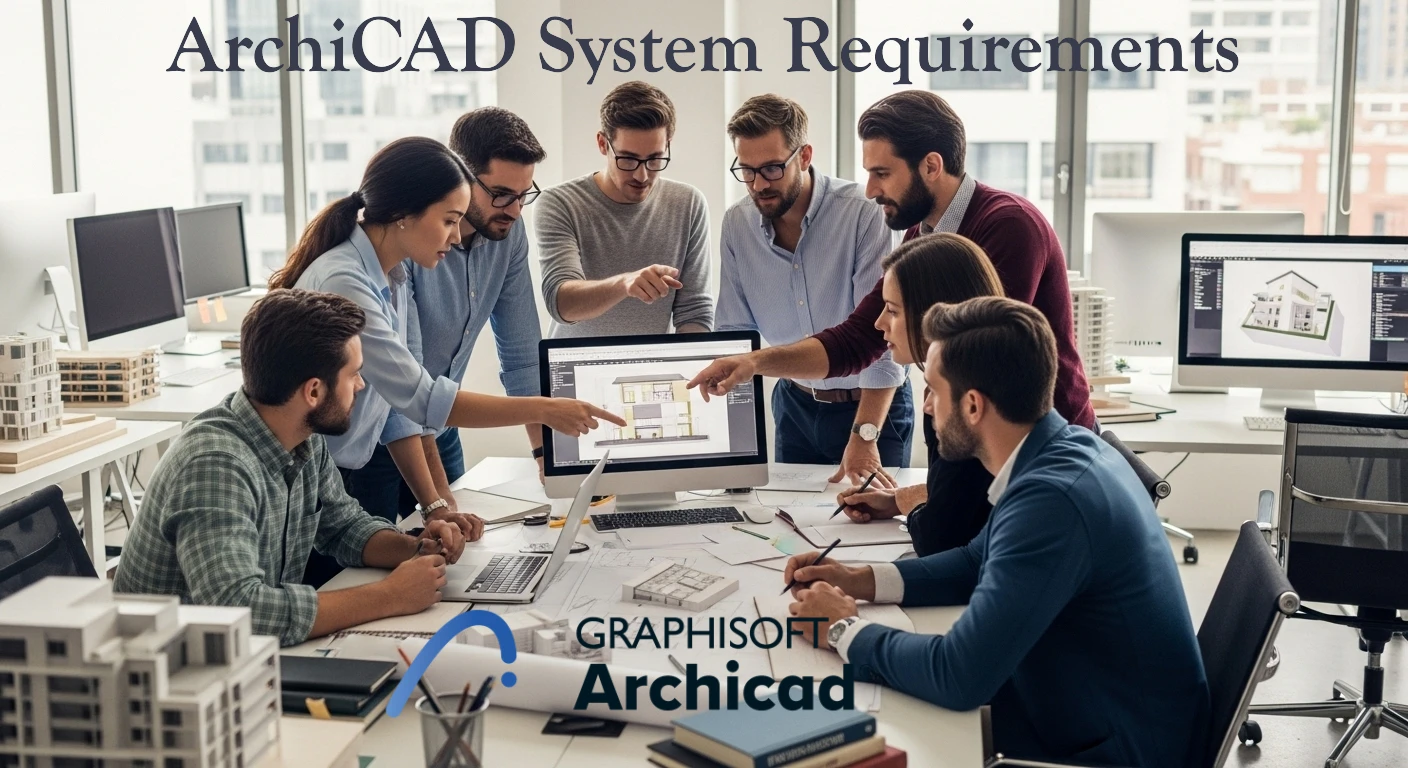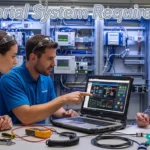If you’re planning to use ArchiCAD in 2025, one of the first questions you’ll ask is: “What kind of computer do I need?” The truth is, ArchiCAD will run on many modern machines, but if you want a smooth experience—especially on larger projects—you’ll need the right balance of CPU power, memory, and a capable GPU.
In this guide, we’ll break down the minimum, recommended, and high-end system requirements for ArchiCAD. We’ll also share practical tips so you don’t overspend, but still get the performance you need.
Also Read: Best laptops for ArchiCAD
Why System Requirements Matter
ArchiCAD is a BIM powerhouse. From detailed 3D models to rendering with Redshift, the workload on your computer can vary a lot depending on project size. A student working on small residential projects will have very different needs compared to an architect handling complex hospital or high-rise designs.
That’s why knowing the requirements upfront saves you time, money, and frustration.
ArchiCAD 2025 System Requirements
Here’s a clear breakdown of minimum vs recommended specs for both Windows and macOS users:
| Component | Minimum Requirements | Recommended for Professionals | High-End (Large Projects & Rendering) |
|---|---|---|---|
| Operating System | Windows 10/11 (64-bit) macOS Sonoma (14) or Sequoia (15) | Latest Windows 11 or macOS 14/15 | Same as recommended, always latest |
| CPU | Dual-core Intel/AMD 64-bit | Quad-core or better (i5/i7, Ryzen 5/7) | i9 / Ryzen 9 / Apple M2 Max |
| RAM | 8 GB | 16–32 GB | 64 GB+ |
| Storage | SSD (5 GB free for install) | NVMe SSD, 10 GB+ free per project | Large NVMe SSD (1 TB+) |
| GPU | OpenGL 4.x / DirectX 11 compatible 2–4 GB VRAM | 4–8 GB VRAM (NVIDIA RTX/AMD equivalent) | 8+ GB VRAM (NVIDIA CUDA/RTX best for Redshift) |
| Display | 1920×1080 | 2K (2560×1600) or multi-monitor | 4K setups for design and rendering |
Minimum Specs: Good for Students & Small Projects
If you’re just getting started with ArchiCAD, or working on small-scale residential projects, a basic setup will do the job. Think:
- Dual-core CPU
- 8 GB RAM
- A modest GPU with 2–4 GB VRAM
This won’t give you lightning speed, but it will let you learn and work on less demanding files without major issues.
Recommended Specs: The Sweet Spot for Most Professionals
For most architects, engineers, and designers, the recommended configuration is the real sweet spot. With a solid quad-core processor, 16–32 GB of RAM, and a decent mid-range GPU, you’ll be able to handle professional workflows comfortably.
This setup is ideal for mid-sized projects, detailed models, and even moderate rendering tasks. It’s also cost-effective—you’re not overspending on power you may not fully use.
High-End Specs: For Power Users & Redshift Rendering
If you’re regularly handling large commercial or complex BIM projects, or if you plan to render directly in ArchiCAD using Redshift, then you’ll want to invest in a high-end machine.
That means:
- 8+ core CPUs (Intel i9, Ryzen 9, Apple M2/M3 Max)
- 64 GB+ of RAM for huge models
- A workstation-level GPU with 8 GB VRAM or more
For Redshift specifically, NVIDIA GPUs with CUDA support deliver the best results, although AMD cards with 8 GB+ VRAM are also supported.
Extra Notes: Licensing, Storage & BIMx
- Licensing: ArchiCAD works with both cloud licenses and CodeMeter hardware/software keys. A stable internet connection is recommended for license verification, BIMcloud, and updates.
- Storage: Always go with SSD (preferably NVMe). Large projects can easily eat up 10 GB or more.
- BIMx: If you’re just using BIMx for viewing, requirements are much lighter. Even a machine with 8 GB RAM can run the desktop viewer.
Final Tips Before You Buy
- Prioritize RAM and SSDs — they make the biggest difference in day-to-day performance.
- Don’t cheap out on the GPU if you plan to render in ArchiCAD.
- Future-proof if you can — buying slightly above your current needs will save you from upgrading too soon.
- Apple Silicon users: ArchiCAD runs well on M2 and newer chips, but check compatibility for plugins and rendering engines.
Conclusion
ArchiCAD in 2025 can run on a wide range of systems, but the right choice depends on your projects. Students can manage with a modest laptop, professionals should aim for the recommended tier, and power users will need high-end hardware—especially if rendering is part of the workflow.
Take the time to match your system to your actual needs, and you’ll enjoy a smoother, faster, and more productive ArchiCAD experience.
FAQs
At the very minimum, you’ll need a modern 64-bit computer, 8 GB of RAM, and a graphics card with at least 2–4 GB of VRAM. That said, most professionals will be happier with 16–32 GB of RAM, a quad-core processor, and a stronger GPU. The exact requirements depend on the size and complexity of your projects.
For small projects, 8 GB is technically enough, but you’ll quickly feel the limits. For smooth day-to-day work, 16 GB is the sweet spot. If you’re working on big commercial models or want to be future-proof, 32 GB or more makes a real difference.
Yes, the RTX 4060 is more than capable for most ArchiCAD users. It handles modeling, navigation, and rendering well. If you’re working with very large files or plan to do heavy Redshift rendering, a higher-tier GPU with more VRAM might give you extra headroom, but for the majority of workflows, the 4060 is a solid choice.
The truth is, ArchiCAD leans on both. The CPU does most of the heavy lifting for modeling and calculations, while the GPU handles 3D navigation, visualization, and rendering tasks (especially with Redshift). A strong balance between the two is what delivers the smoothest experience.










